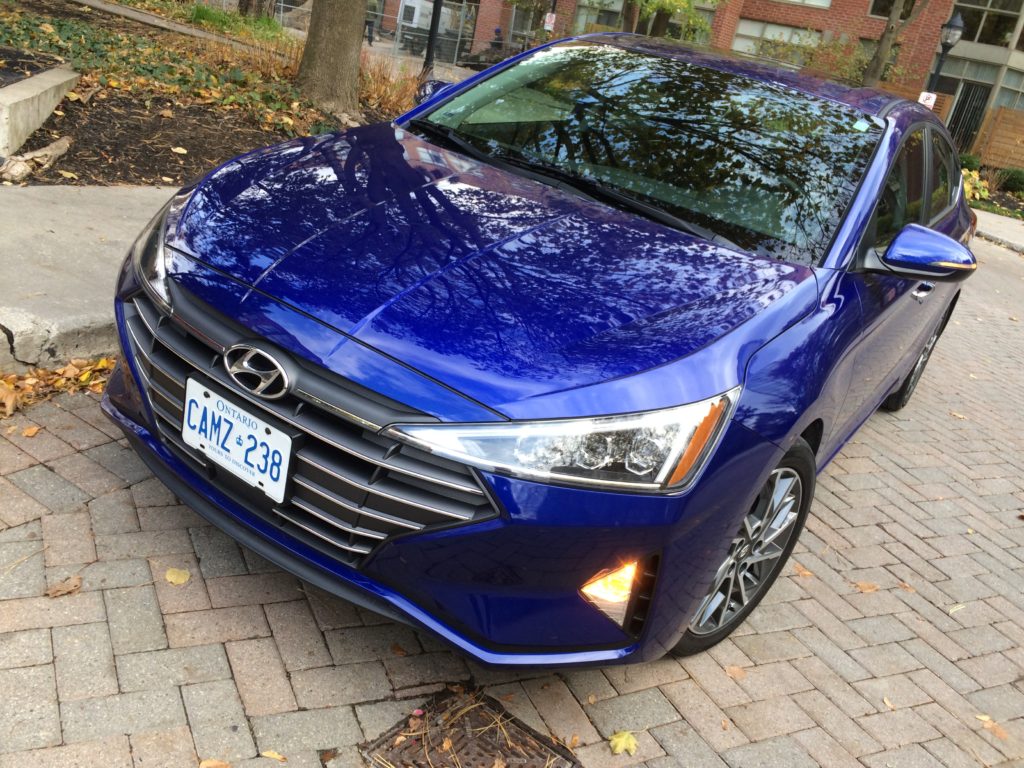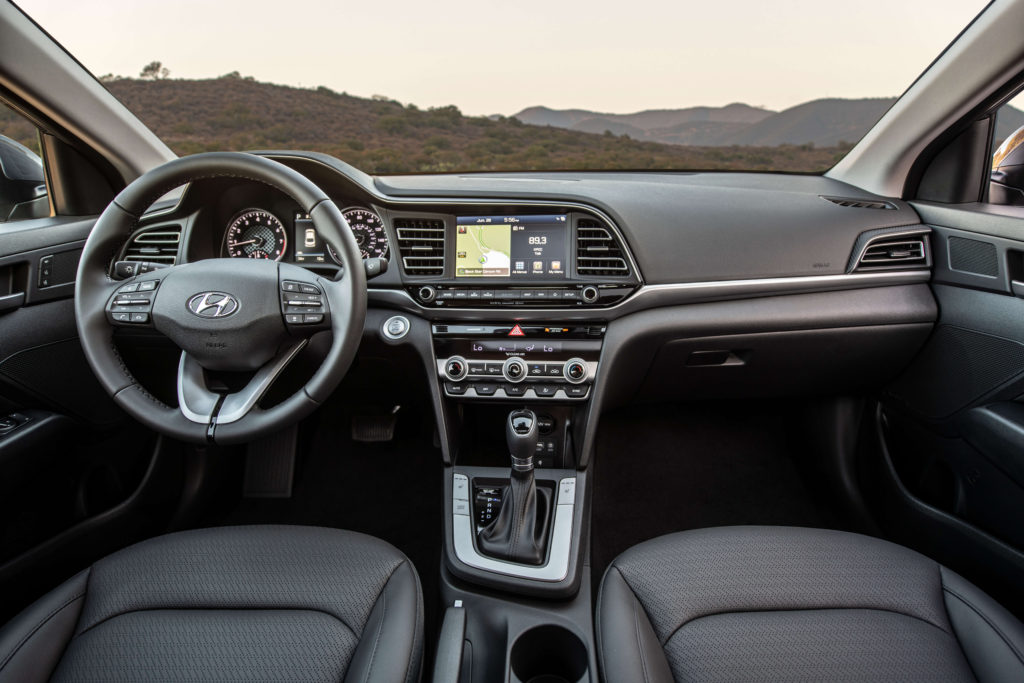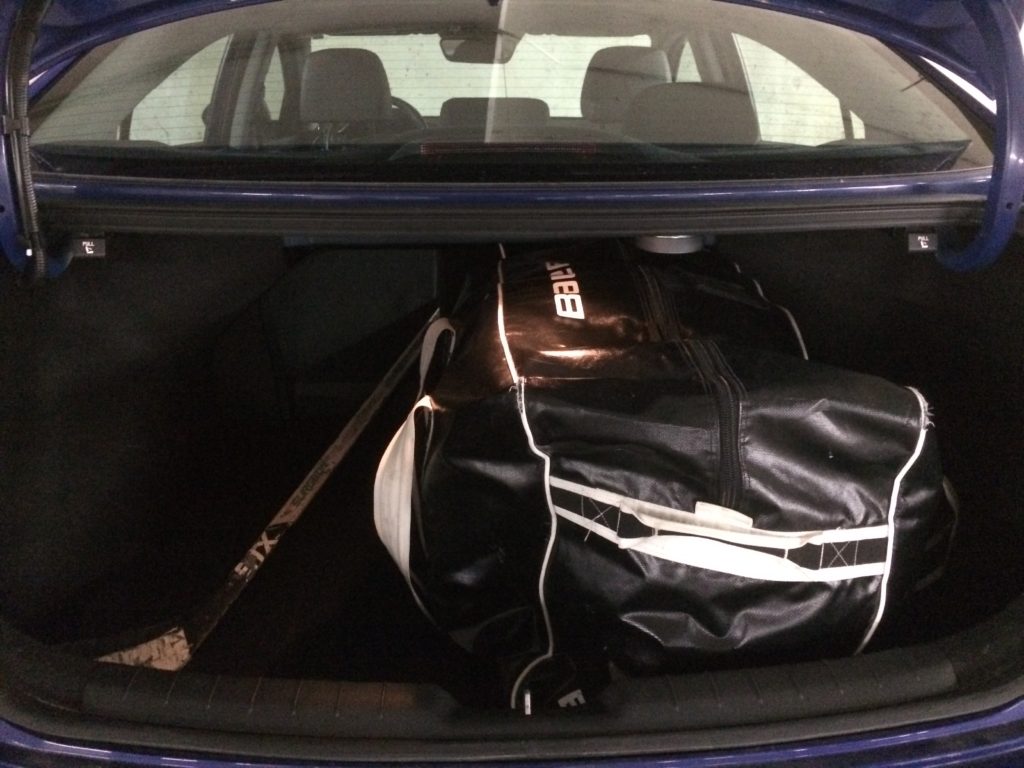Thank goodness for automaking sanity. In recent years, certain (ahem) “carmakers” have chosen to stop making, well, cars, in favour of trucks and SUVs. But look around on the roads – cars still sell, and well at that.
One of the “abandoned” segments is that of small, fuel-efficient, reliable sedans and hatchbacks. The Japanese have been dominating this segment for decades, but Korean carmakers are hot on their heels with eqully compelling offers. The segment has grown beyond its humble roots to include luxury touches commonly found on more expensive vehicles.
It’s in this sub-segment that Hyundai placed its Elantra 2.0 Ultimate, and the results are satisfying.

First impressions
The overall shape is, well, that of a slippery econobox that smacks of responsible vehicle choice. Even with the attractive dark blue paint on my tester, the sharp lines in the LED lights front and back provide about all the styling excitement you’ll get. If you’re OK with ho-hum styling – in other words, if you don’t judge books by their covers – read on.
Interior
The door handles open at the push of a button, so you can add this Elantra to the ever-growing list of cars that never oblige you to touch a key or a fob. Once seated on the heated leather driver’s seat, a quick glance shows all controls to be well laid out – you won’t spend too much time searching for anything, on the steering wheel, the centre stack or elsewhere.

Common touchpoints – the steering wheel, the shift lever, the centre armrest – get the leather treatment. Everything else feels downmarket by comparison.
My only quibble was the sunroof. My head was jammed against its frame whenever I drove it, and it left me with a “part” where contact was mintained for the duration of the drive. I can only hope that automakers eventually realize their offerings can be considered upscale even without sunroofs.
Rear seats, like the front ones, are heated. (The driver gets a heated steering wheel as well.) Heat and a centre armrest containing cupholders are the only amenities “back there.“
Hockey bag test
The bag fits longitudinally, sliding easily through the trunk opening. A second bag of equal size might prove a tight squeeze. I slid my sticks through the “40” portion of the 40-60 folding rear seats.

Opening the trunk doesn’t require the fob either. Stand behind the trunk for a few seconds (with the fob on you) and it will open by itself. There’s also a part of the logo (in the upper half of the “H”) that can be pressed to open the trunk. Subtle, but effective, and it helps give the trunk lid a cleaner look.
In-cabin technology
An 8-inch touchscreen provides access to a full suite of features. Hyundai includes buttons to offer quick access to key screens. While the screen sits under a smooth dash line, not popping up conspicuously over it, that doesn’t make it easier to use when the vehicle is in motion. It’s a common complaints (of mine) that bumps in the road cause me to touch the wrong part of the screen. This Elantra ships with Android Auto and Apple CarPlay. I use the latter, and its large icons and “tappable” areas mitigate the bump issue somewhat.
Audio flows through an 8-speaker Infinity sound system that are smoothly integrated into door panels and other surfaces. If Hyundai is serious about higher-end brainding for the Ultimate trim level, different-coloured speakers might help.
A wireless charging pad sits at the base of the centre stack alongside USB ports.
The 4.2” display between the speedometer and tachometer displays “just in time” information like the gear selection or windshield wiper speed in the moment the driver makes changes such settings. After a couple of seconds, the settings get out of the way. It’s a great use of space, preventing clutter in the cluster.
Driving
The 2.0L, four-cylinder engine can produce 147 hp and 132 lb-ft of torque. It proved adequately peppy, driving the front 17” wheels through an intelligent variable transmission (IVT). Hyundai touts its IVT for better fuel economy and a smoother drive thanks to fewer gear changes felt inside the car. Yeah, I know it’s a continuously variable transmission by another name. That said, it is more reactive than the stereotypically slushy CVT. The IVT helps the engine punch above its weight when navigating highway on-ramps and passing on the highway.
The Ultimate trim level includes three drive modes, including Sport. This seems out of keeping with the economical image Hyundai has cultivated. From this Korean outfit, I would only expect Sport mode on a Veloster. If you want Sport mode, I would try the available manual transmission (available, that is, only on the entry-level Essential trim level).
Where this car excels is in comfort. Set adaptive cruise control when you’re on the highway and you’ll find the ride surprisingly relaxing
Hyundai includes a variety of active safety technologies in its Smartsense package. From blind-spot collision warning to lane-keeping assist to a rear cross-traffic collision warning to a parking distance warning to the aforementioned active cruise control, this Elantra will do about all that is possible in today’s automotive world—especially for a car in this price range—to keep its occupants safe.
Fuel economy
The Elantra’s overall 6.8L/100 km is boosted by 5.6L/100 km on the highway, making this one of the more economical offerings available today.
Pricing
You can get into a base Elantra for about $17,000 MSRP, before taxes and other fees. The extras on the Ultimate edition will set you back $27,549 MSRP.